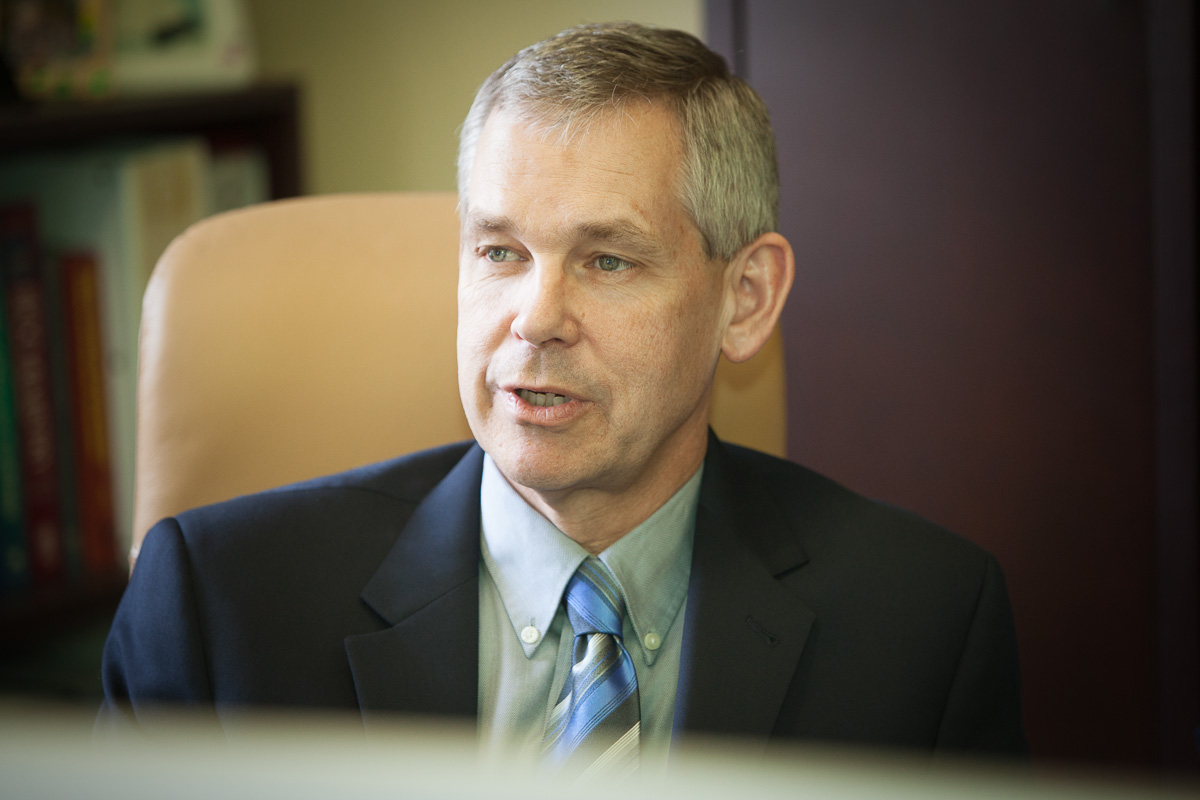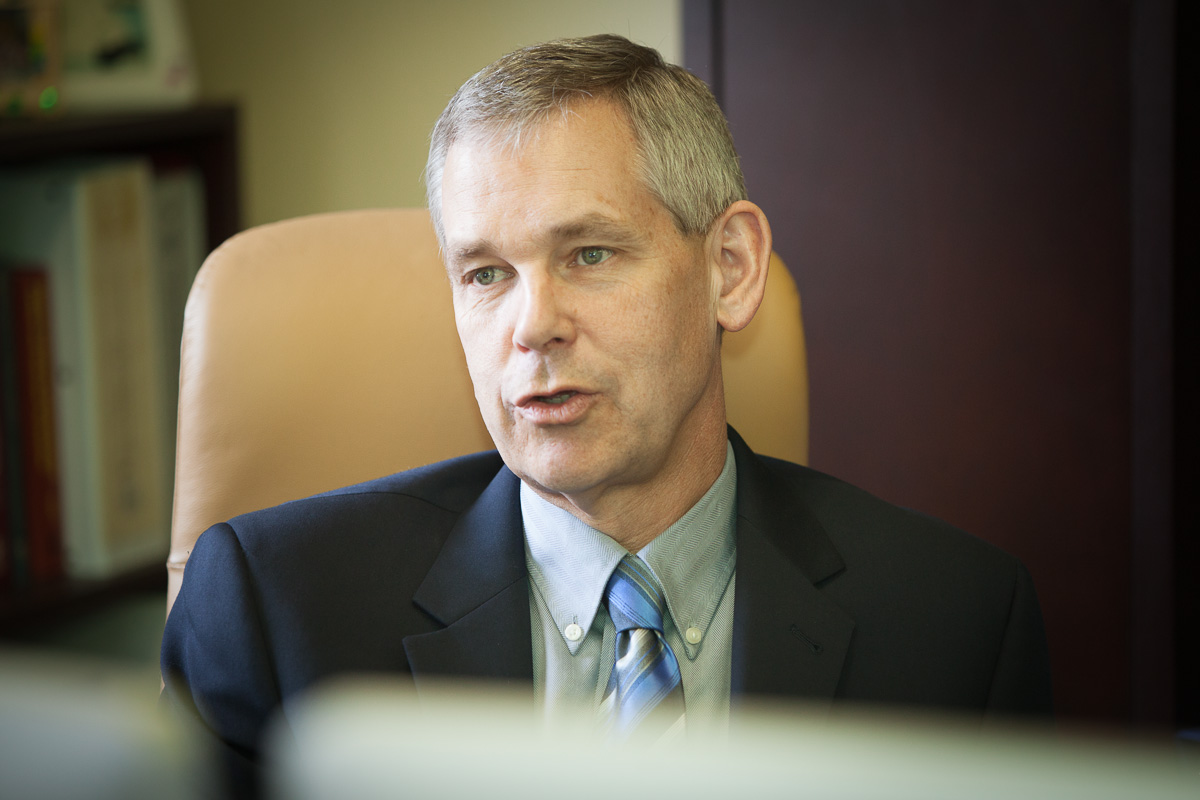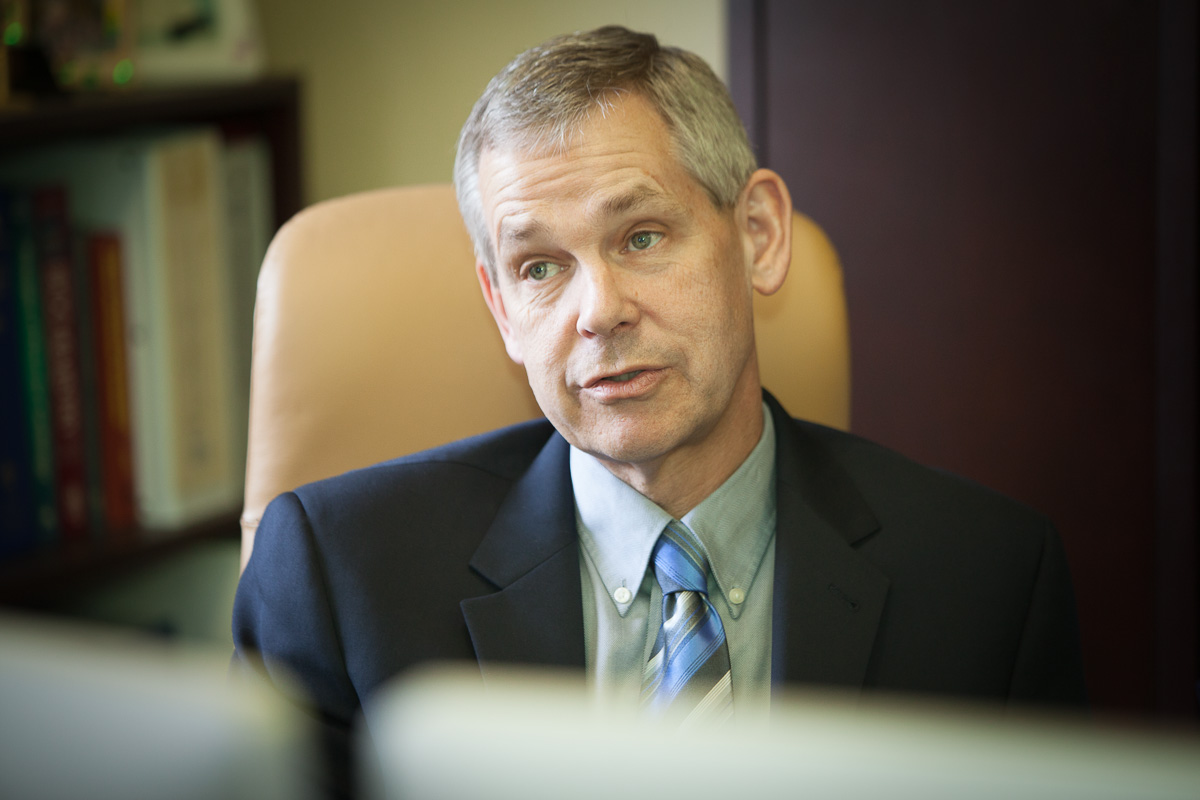Stephen Archer presents inaugural Queen's/Heart and Stroke Foundation lecture
March 11, 2014
Share
Queen’s University cardiologist Stephen Archer is presenting the inaugural Queen’s/Heart and Stroke Foundation Lecture this Thursday, March 13 at 4:30 p.m. in the Queen’s Medicine Building.
In an email exchange with Anne Craig, Dr. Archer discussed his work with the Heart and Stroke Foundation, the impact funding will have on cutting the death rate from heart disease in Canada, and the career path that led him to Queen’s.
AC: When did you first know you wanted to become a doctor and how did you decide on this field of study?
I was the first person in my extended family to attend University. I was impressed with the hard work of my local family doctors in Prince Edward Island and New Brunswick where I grew up. In addition, I heard about medicine from my mother Barbara Ann Archer, a talented nurse who worked in the neurology service at the Saint John General Hospital.
I chose cardiology as a specialty based largely on my work with my mentor and friend, E. Kenneth Weir. I met Ken at the Minneapolis Veterans Affairs Medical Center in 1982. Ken is a superb cardiologist and, to my good fortune, was the first attending physician I worked with at the University of Minnesota. I volunteered to do research in his laboratory and the rest, as they say, is history. I followed in his footsteps, both clinically and in my research. He remains my friend and mentor.

AC: What career path brought you to Queen’s?
SA: This is my second trip to Queen’s. The first trip was as an undergraduate student and medical student (Meds’ 81). The more recent path led me back to Queen’s as Head of Medicine after a 30-year absence.
I was recruited to Queen’s by the late Padre A. Marshall Laverty. He visited my local high school in Hampton New Brunswick. I had committed to attending Dalhousie and considered his lecture “optional.” I was in the process of skipping class when I was apprehended by the principle of Hampton High School, Mr. Joe Thompson. Having been summarily returned to the classroom, I remember Padre Laverty extolling the virtues of Queen’s University, located in what then seemed the remote province of Ontario. Perhaps because he was so inspirational and enthusiastic and perhaps because it is in the nature of Maritimers to travel to terra incognita, I applied to and was accepted by Queen’s.
My second trip to Queen’s occurred only recently. I was recruited from the University of Chicago in November 2012 by Dean Richard Reznick to head a talented and growing Department of Medicine. My goals include promoting medical innovation and ensuring that Kingston elevates its international profile in medicine, research and education. One of my focuses is to work with my colleagues to enhance use of new electronic media in medicine and in education. Our trainees now use iPads to interact with the health record and educate patients, and we have created the Department’s 2014 annual report as an iBook (http://deptmed.queensu.ca/blog/?p=618). It tells patient stories, shows our research and education successes, and highlights achievements of Faculty members. I also write a blog about discoveries and innovations in our Department (http://deptmed.queensu.ca/blog/?p=640).

AC: How did you become involved in the Heart and Stroke Foundation?
SA: Like many scientists, I became involved with the H&SF and its counterpart, the American Heart Association, when I began to seek funding for my research. I study mechanisms of oxygen sensing in the lung blood vessels and the ductus arteriosus. Hypoxic pulmonary vasoconstriction (HPV) is a phenomenon in which small arteries in the lung constrict to divert blood to the best-oxygenated portions of the lung. It optimizes oxygen uptake in lung diseases, like pneumonia. The ductus is a vital fetal blood vessel. With the first breath, at the moment of birth, increased oxygen causes the ductus to constrict, diverting blood to the newly expanded lung and establishing the baby as an air breather. If oxygen-sensing fails, the baby becomes “blue” and may have heart failure. Funded in part by the H&SF, my team has identified the role of mitochondria as oxygen sensors in the lung circulation and ductus arteriosus, showing that mitochondria secrete radicals and peroxides that regulate potassium channels and ultimately make blood vessels either constrict or relax. Building on these discoveries we have found that these oxygen-sensing mechanisms fail in many diseases, such as cancer, pulmonary hypertension and patent ductus arteriosus, causing cells to behave as if they were oxygen deprived even though they have access to abundant oxygen. The National Heart, Lung, and Blood Institute (NHLBI) acknowledged the uniqueness of this research by allowing me to bring my RO1 grants to Canada from the University of Chicago.
AC: What work have you done with the H&SF?
SA: I was introduced to the American Heart Association in 1988 and became a volunteer for that organization, ultimately serving as President of the Board in Chicago.
In 1998 I moved to the University of Alberta as Chief of Cardiology. During interviews with the Head of Medicine, I learned of the opportunity to compete for the Heart and Stroke Chair for Northern Alberta and the Northwest Territories. The opportunity to hold the Heart and Stroke Chair was one of the major factors in my decision to accept this position. I began volunteering for the H&SF shortly after my arrival in Edmonton and soon was engaged in peer review, fundraising and philanthropy across the province. Much of my early work on the role of mitochondrial metabolic and structural disorders as contributing mechanisms in pulmonary hypertension and cancer was funded from my H&SF Chair and from H&SF grants. It was easy to be a committed volunteer for the H&SF because of the huge benefits the H&SF provided to the medical and scientific community, through the funding of research and leadership in patient advocacy.

AC: What is the role of the inaugural Heart and Stroke lecturer?
SA: Heart disease and stroke account for one of every four deaths in Canada. The H&SF estimates that more than 50,000 strokes, 70,000 heart attacks and 40,000 cardiac arrests occur annually. This lectureship raises another voice in the call to action, which reminds each of us to do what we can to reduce death and disability so that Canadians can live healthy lives free of heart disease and stroke. In addition my goal is to thank the H&SF for its support over the years and to showcase the research they have helped fund.
AC: What does the new funding from the H&SF mean to Queen’s?
SA: This funding means that Queen’s will be able to build on the excellent base of basic, translational and clinical research it already enjoys. We (meaning the university in partnership with Kingston’s hospitals: Kingston General Hospital, Hotel Dieu and Providence Care) have an outstanding group of cardiologists, cardiac surgeons and cardiovascular researchers. Led by Dr. Al Jin, Kingston General Hospital also has one of the best stroke programs in Canada. Likewise, our region STEMI (ST-elevation myocardial infarction) program, led by Dr. Cathy McClellan, provides some of the best and most timely care for patients with myocardial infarction of any program in the country. It is my hope that new funding from the H&SF will be used to catalyze the prioritization of heart and stroke research at Queen’s.
AC: How important is the partnership between the H&SF and the 19 partner institutes involved in the lecture series?
SA: It is potentially quite important. The H&SF has committed to give $300 million over 10 years to 20 of Canada’s leading research institutions. Although this is not an increase in funding, the long-term support should have a stabilizing effect. This funding commitment is an investment in the Heart and Stroke Foundation’s goal of cutting the rate of death in Canada from heart disease and stroke by 25 per cent by the year 2020.
For more information on the inaugural lecture visit the website.